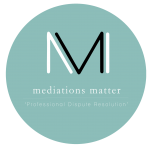In a recent divorce case (CMA v LA [2023] ZAGPJHC 364) that was heard in the South Gauteng High Court, the judge felt it necessary to comment and note her disapproval of the aggressive tone and emotive language adopted in the matter.
The judge stated
“Mindful of the inevitable trauma associated with any divorce, not only to the children, but also to the spouses, it is of fundamental importance that legal representatives of warring spouses resist the temptation to use unreasonably hostile or inflammatory language, whether in correspondence, pleadings, or affidavits. Especially in matters concerning children, emotive language serves to inflame, rather than avoid or minimise legal action.”
In litigation, motive language often then leads to a more lengthy, emotionally draining, and expensive lawsuit. Many of these litigation cases involve children, and they are the ones that suffer the most.
In noting her disapproval, the judge made a footnote reference to section 7 of the Children’s Act, and in our view, particularly sections 7 (l), (m) & (n) , and thus by implication that such aggressive tone and emotive language was not in the best interest of the minor children. See extract of Section 7 (l), (m) & (n) at the end of the article.
Mediation is geared toward the opposite approach.
In mediation, we take the least aggressive approach and create a space where all parties can be heard in a calm and productive manner. We will often have counsellors available to assist individuals emotionally during the mediation process, especially for children.
More often than not mediated divorces are completed in a timely manner, with the least amount of emotional and financial trauma.
If you are in a difficult separation or in the middle of a lengthy divorce and concerned for the well-being of your children, please feel free to contact us and have a free 15 min online consultation with one of our mediators.
*Section 7 deals with the Best Interests of a Child Standard and factors that the court must consider when determining the best interests of the child. Sections 7 (l), (m) & (n) states that the following factors must be considered:
(l) - the need to protect the child from any physical or psychological harm that may be caused by –(i) subjecting the child to maltreatment, abuse, neglect, exploitation, or degradation or exposing the child to violence or exploitation, or other harmful behaviour; or
(ii) exposing the child to maltreatment, abuse, degradation, ill-treatment, violence or harmful behaviour towards another person (my emphasis);
(m) - any family violence involving the child or a family member of the child
(n) - which action or decision would avoid or minimize further legal or administrative proceedings in relation to the child.
